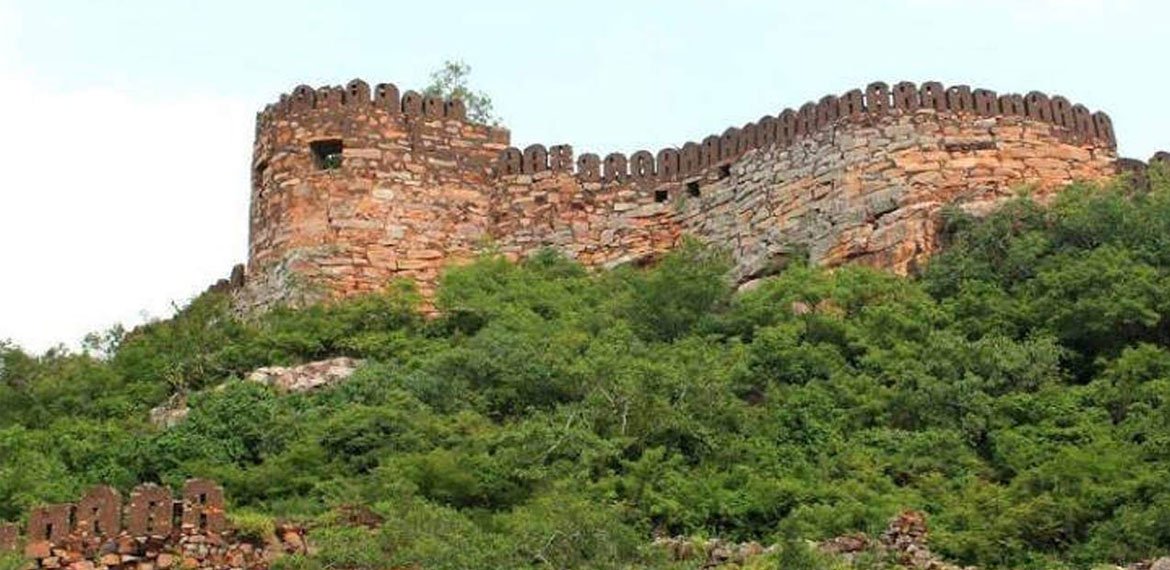Udayagirik Fort

Udayagiri Fort, Kanyakumari:
The Udayagiri Fort, also known as Dillannai Kottai, is a fascinating historical landmark that will astound you once you hear about its rich history, purpose of construction, the people who built it, and the invasions that took place during that time period. If you enjoy studying the history and learning about the ancestral kingdom, this fort should be at the top of your list of must-see destinations.
This fort spans 90 acres of land and was built with big granite stones. This fort is currently managed by the forest department and serves as a biodiversity park, showcasing a broad range of birds and animals, as well as a separate children's area.
What is the history of the Udayagiri Fort?:
The Udayagiri Fort, located in Kanyakumari District, has historical significance dating back to the time of Veera Ravi Varma, King of Venad from 1592 to 1609 AD. Its construction began about 1600 AD and served as both an armory and a defensive building. According to historical records, zamindars generously contributed to the construction of the mud fort. Unfortunately, during the time of Venad king Baskaravarma, the fort was destroyed by monarch Raja Raja Chola.
During the reign of King Marthanda Varma (1729-1758 AD), the renowned creator of the present Travancore state, a significant event occurred known as the Battle of Colachel against the Dutch army headed by General Eustachius Benedictus De Lannoy. This historic conflict ended with a decisive triumph, thanks in great part to General Velu Thambi's strategic brilliance in apprehending De Lannoy and his military equivalent, General Peter Flory.
De Lannoy was an expert in firearms. Recognizing his abilities, he was appointed as commander-in-chief of the Travancore army and became known as "Valia Kappitaan," which translates as heroic commander. During Marthandavarma's reign, the king's desire to defend and protect his realm led to the restoration of Udayagiri Fort under the supervision of De Lannoy. The fort underwent a reconstruction phase between 1741-1744 AD., Using huge granite stones. This large fort spanned 90 acres and was built strategically around a 260-foot-high hilltop (80 meters). The hillock's lofty position made it an ideal view point for firing artillery strikes. De Lannoy commanded the Udayagiri Fort, which served as a military training center for Travancore Army men.
Inside the fort, there was a manufacturing section that produced artillery weapons such as mortars and cannonballs. Today, tourists can still see the relics of these manufacturing facilities. The cannonballs were fashioned entirely of iron and were available in a variety of sizes, demonstrating De Lannoy's extensive knowledge of artillery. Some of these cannonballs have been saved and placed on display for visitors to see.
Within the Fort, there was a gigantic cannon that could not be moved by soldiers or elephants. Following King Marthanda Varma's reign, De Lannoy remained to serve under King Rama Varma. Unfortunately, De Lannoy became unwell and passed away in 1777 AD. To commemorate De Lannoy's outstanding achievements to the Travancore army, a memorial was created within the fort, encircling his burial. Adjacent to De Lannoy's grave are the graves of his wife Margeratte, his son Johannes De Lannoy, who also served as captain, and Peter flory. The grave itself has a stone inscription in Tamil and Latin, along with an engraved Dutch emblem.
As a symbol of respect during De Lannoy's funeral, roughly 8,000 cannonballs and weaponry were laid on both sides of the path leading to the cemetery.
Furthermore, the historical significance of Udayagiri Fort went beyond its military purposes. In the 18th century, the fort served as a prison for soldiers captured during Tippu Sultan's reign. Following this period, the English East India Company administered the fort until the middle of the nineteenth century.



